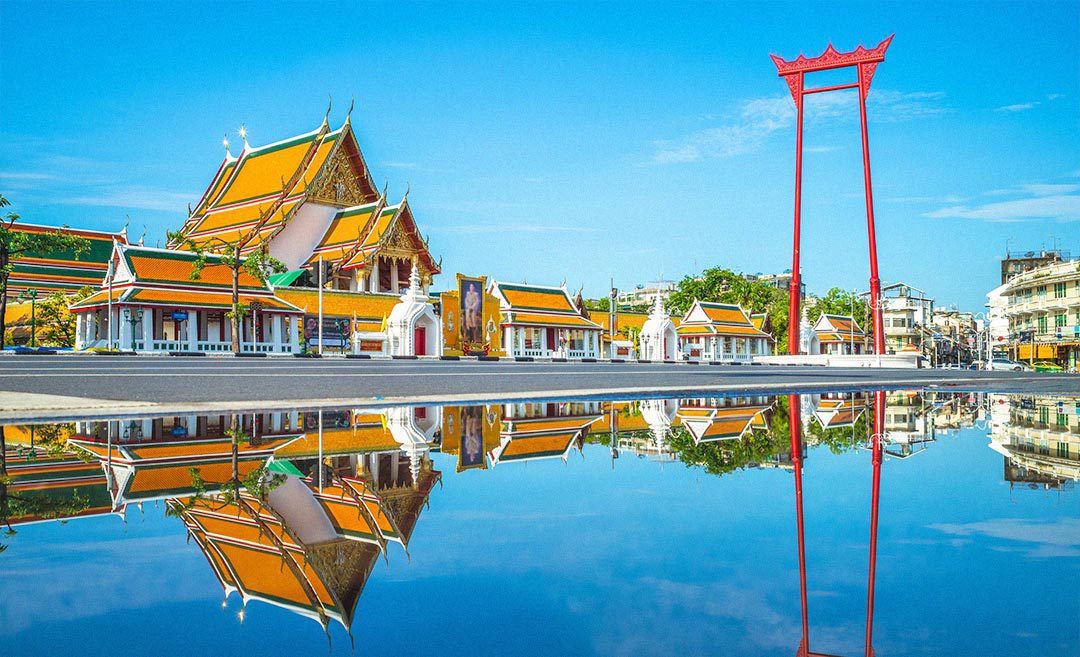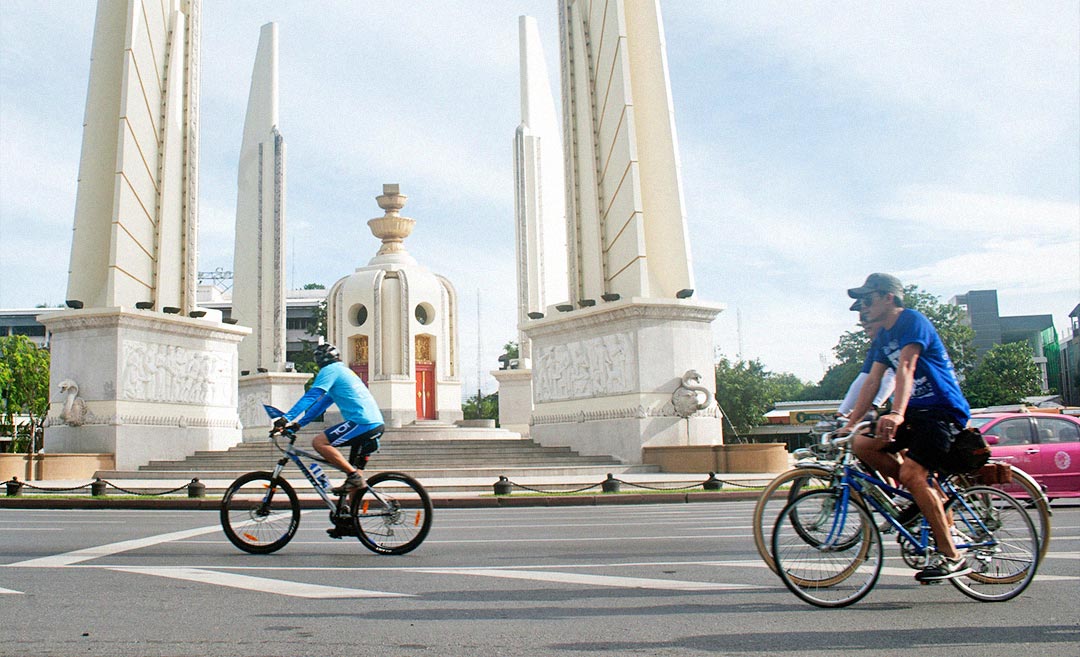In Bangkok’s Sao Chingcha neighbourhood, not far from the Grand Palace, is a curious relic that hints at the syncretic nature of belief in Thailand.
Resembling a stretched Japanese torii, the red wooden structure, situated right in front of Wat Suthat, soars 21.15 metres into the air, towering above nearby buildings.
Known as the Giant Swing, it is one of the few prominent reminders of a time when Hindu rites played an important role in Thai public life.
As old as Bangkok
The Giant Swing was erected in 1786, four years after King Rama I established the Chakri dynasty and relocated the capital, raising the city pillar in Rattanakosin. It was commissioned on the advice of a Brahmin from Sukhothai called Sitthichai, also known as Kratai.
Made from teak, the swing plays a central role in Triyampawai-Tripawai, a Brahmin New Year swing ceremony dating back to the Sukhothai Kingdom (1238-1438) which commemorates the mythological creation of Earth.
It is based on a legend
According to legend, after the Hindu god Brahma created the Earth, Shiva was asked to test its stability.
To do this, Shiva enlisted the aid of the naga king, who tied himself to two trees over a river and swung back and forth while the god stood on one foot. Despite the swinging, Shiva did not fall, proving that the newly formed Earth was stable.
The swing ceremony
The swing ceremony was a reenactment of that tale. Garbed in naga headdress, three teams of four Brahmins known as naliwan took turns swinging on a wooden board suspended from the crossbar as they attempted to snatch a bag of silver coins from a tall bamboo pole with their teeth.
There were three boards – symbolising the three swings taken by the naga king – featuring images of the Earth goddess Phra Mae Thorani, the water goddess Phra Mae Khongkha and the sun and moon.
Arcing high off the ground, the teams were presided over by the Phraya Yuen Chingcha or ‘lord who stands on the swing’. This make-believe Shiva was originally played by the agriculture minister before being replaced by a senior civil servant.
Afterwards, all 12 naliwan performed a dance called ram saneng, using animal horns to scoop holy water from a giant metallic bowl representing the ocean. Sprinkling the water onto the audience recalled how the naga king played joyfully in the river after Shiva proved the Earth was firm.
Parades & concurrent ceremonies
This was followed by a parade attended by the Phraya Yuen Chingcha where propitiatory food was distributed to the onlookers, who numbered in the hundreds.
The swing ceremony was preceded by a parade led by the court Brahmins and the agriculture minister around the city walls – coinciding with the rice harvest in December, Triyampawai-Tripawai also served as a thanksgiving festival.
Triyampawai-Tripawai is intrinsically linked to another ritual, the Royal Ploughing Ceremony, which is still conducted at the start of the planting season to raise the morale of farmers.
In this ceremony, which takes place in April or May, the king beseeches the gods to bless his people with successful crops. Months later, when the crops were harvested, they were presented as offerings during Triyampavai-Tripavai to thank the gods for their blessings.
Changes throughout the years
The swing ceremony, one of 12 royal ceremonies performed during each month of the Thai lunar calendar, originally took place during the first lunar month. It was moved to the second lunar month at the start of the 19th century to avoid seasonal flooding, which made roads muddy and inconvenient for the ceremony.
According to the Phraratchaphithi Sip Song Duean written by King Chulalongkorn, the Brahmins had no issue changing the dates as they believed they were the only ones who could open the gates of heaven – if they did not chant incantations to open it, the gods could not come down.
The ceremony is actually a combination of two observances – Triyampawai, which spans 10 days, followed by the five-day Tripawai. The former was held to receive Shiva when he descended from heaven to test the Earth’s stability, while the latter welcomed Vishnu who came down later.
The Giant Swing was originally located in front of Devasthan, the official centre of Hinduism in Thailand and the home of the brahm luang, court Brahmins who perform royal ceremonies for the king. In 1920, it was rebuilt and moved a few metres to its current location to make way for a gas plant.
Tradition suspended
Sadly, the swing ceremony was discontinued in 1934 during the reign of King Prajadhipok after several accidents and fatalities. The court Brahmins, however, were allowed to continue performing the prayers in private at Devasthan.
Since 1920, the Giant Swing has undergone several refurbishments and reconstruction. It was renovated twice, once in 1947 and again in 1970, before further deterioration forced the structure to be replaced with one made from golden teak wood from Phrae province in 2006.
The Giant Swing was gazetted as a national monument on 22 November 1949.
In 2018, the Bangkok Metropolitan Administration – whose headquarters face Wat Suthat from across Lan Khon Mueang town square – made an abortive proposal to revive the swing ceremony.
A smaller version of the swing is still feted in the southern province of Nakhon Si Thammarat during the Nang Kradan festival, which coincides with Songkran and has been celebrated since 657.
This story by Yow Hong Chieh was originally published on AirAsia. Zafigo republished this story in full with permission from the publisher, simply because good stories should be read by as many people as possible! If you have stories that will be of interest and useful to women travellers, especially in Asia, please get in touch with us at [email protected].




